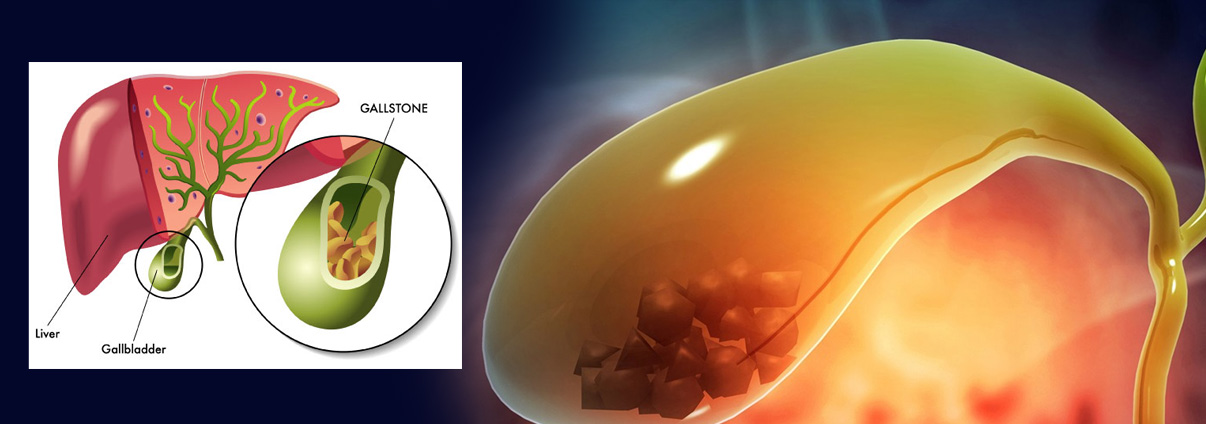
Gallstones are hardened deposits that form in the gallbladder, a small organ located under the liver that stores bile, a digestive fluid produced by the liver. Gallstones can vary in size from as small as a grain of sand to as large as a golf ball. They may be made of cholesterol or bilirubin (a byproduct of red blood cell breakdown). Gallstones can block the normal flow of bile and lead to pain, inflammation, and other complications.
Causes
Gallstones form when the balance of substances that make up bile is disrupted. The main causes include:
- Excess Cholesterol: When the liver secretes more cholesterol than bile can dissolve, the excess cholesterol can crystallize and form stones.
- Excess Bilirubin: Conditions that cause the liver to produce too much bilirubin, such as liver cirrhosis, biliary tract infections, or certain blood disorders, can lead to the formation of pigment gallstones.
- Concentrated Bile: If the gallbladder doesn't empty completely or often enough, bile can become too concentrated, leading to the formation of gallstones.
- Obesity: Being overweight increases cholesterol levels in bile, leading to gallstone formation.
- Pregnancy: Hormonal changes during pregnancy can lead to bile becoming more concentrated.
- Diets high in fat and cholesterol and low in fiber may increase the risk of gallstones.
Symptoms
Gallstones themselves often cause no symptoms and are discovered incidentally during imaging studies. However, when a gallstone blocks a bile duct, it can lead to a condition known as biliary colic or other complications, with symptoms including:
- Sudden and intense pain in the upper right abdomen or center of the abdomen, often after eating fatty meals. The pain may last from a few minutes to several hours.
- Pain between the shoulder blades or in the right shoulder
- Nausea and Vomiting
- Jaundice
- Fever and Chills
- Dark Urine and Pale Stools
Surgical Treatment
The most common and effective treatment for symptomatic gallstones is surgery, particularly when they cause repeated symptoms or complications.
Laparoscopic Cholecystectomy:
This is the most common surgical procedure to remove the gallbladder. It involves several small incisions in the abdomen through which a laparoscope (a small, lighted camera) and surgical instruments are inserted to remove the gallbladder. Advantages include a shorter hospital stay, quicker recovery, and less postoperative pain. Most patients can go home the same day or the next day after surgery and return to normal activities within a week.
Open Cholecystectomy:
In some cases, such as when there is significant inflammation, scarring, or complications, an open cholecystectomy may be necessary. This procedure involves a larger incision in the abdomen to remove the gallbladder. Recovery time is longer, usually involving a few days in the hospital and several weeks before returning to normal activities.
Endoscopic Retrograde Cholangiopancreatography (ERCP):
This procedure may be used to remove stones from the bile ducts before or after gallbladder surgery. ERCP combines endoscopy and fluoroscopy to locate and remove bile duct stones without removing the gallbladder.
Non-Surgical Treatments:
- Oral Dissolution Therapy: Medications like ursodeoxycholic acid can dissolve cholesterol gallstones, but this is a long-term treatment and not commonly used due to its limited effectiveness and the potential for recurrence.
- Shock Wave Lithotripsy: This method uses shock waves to break up gallstones, but it is rarely used and typically only in cases where surgery is not an option.
When to Seek Medical Attention
Immediate medical attention is necessary if you experience severe abdominal pain, jaundice, fever, chills, or symptoms of a gallstone complication, such as pancreatitis or cholangitis. These conditions can be life-threatening and require prompt treatment.